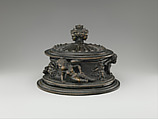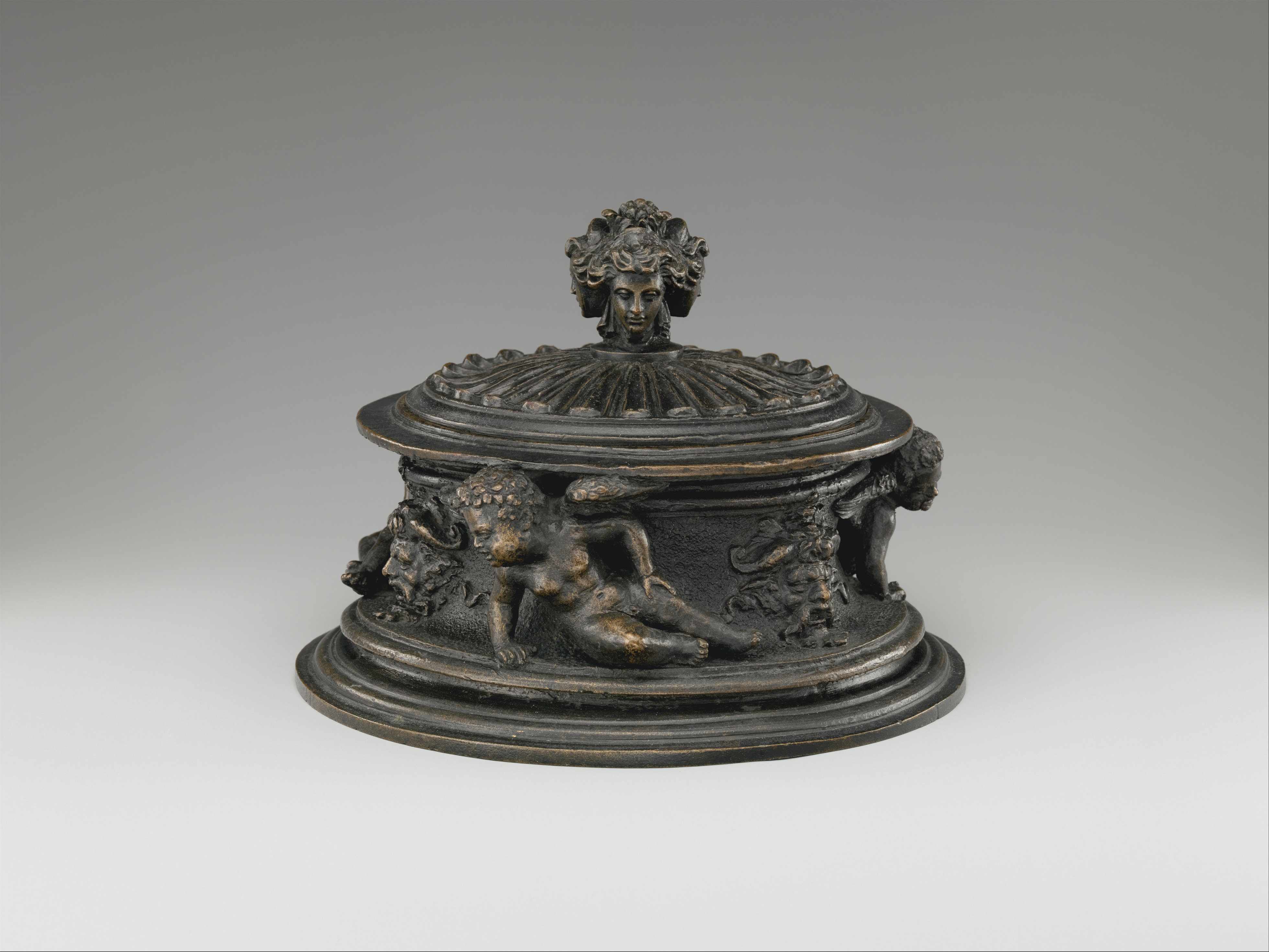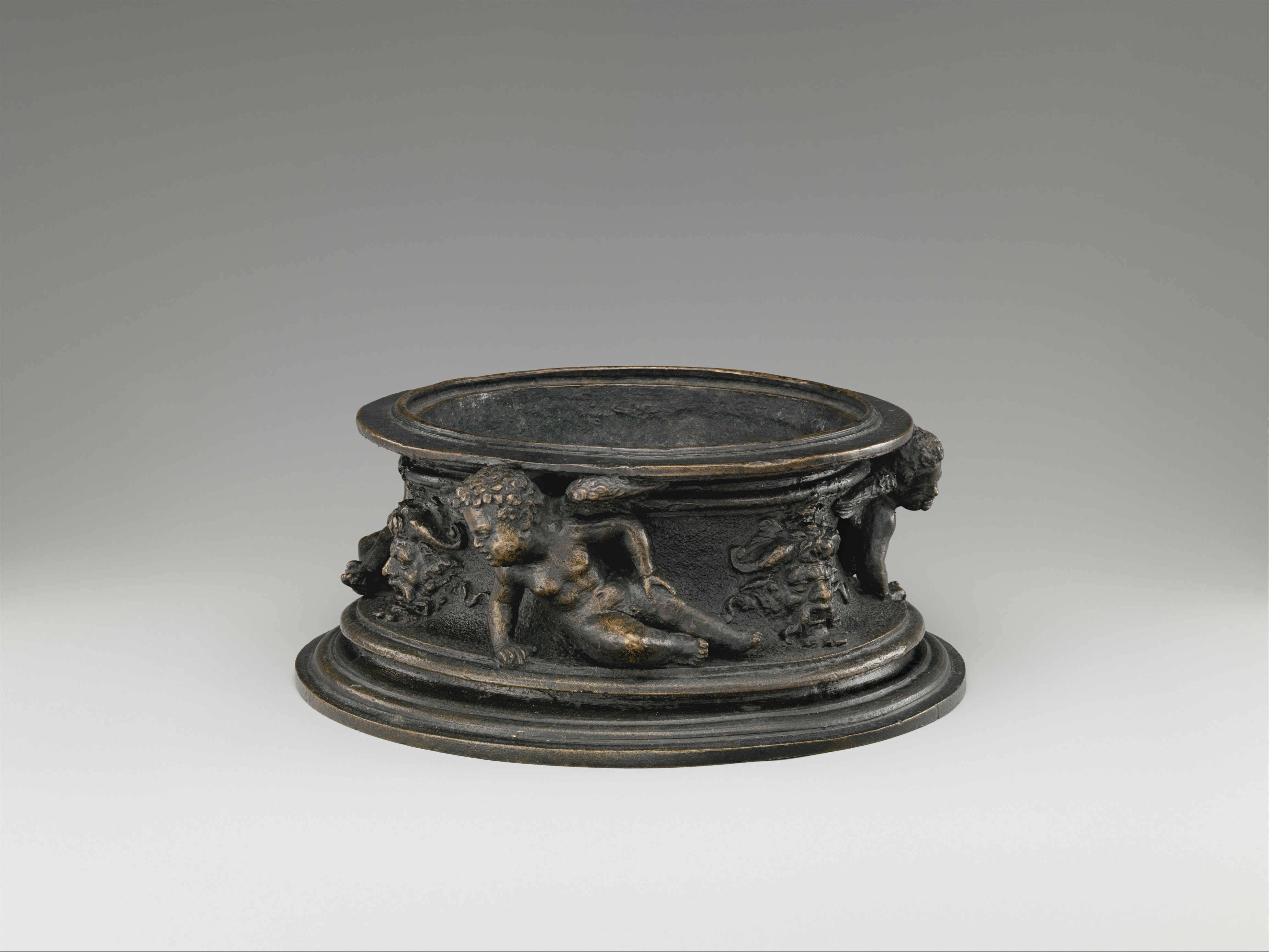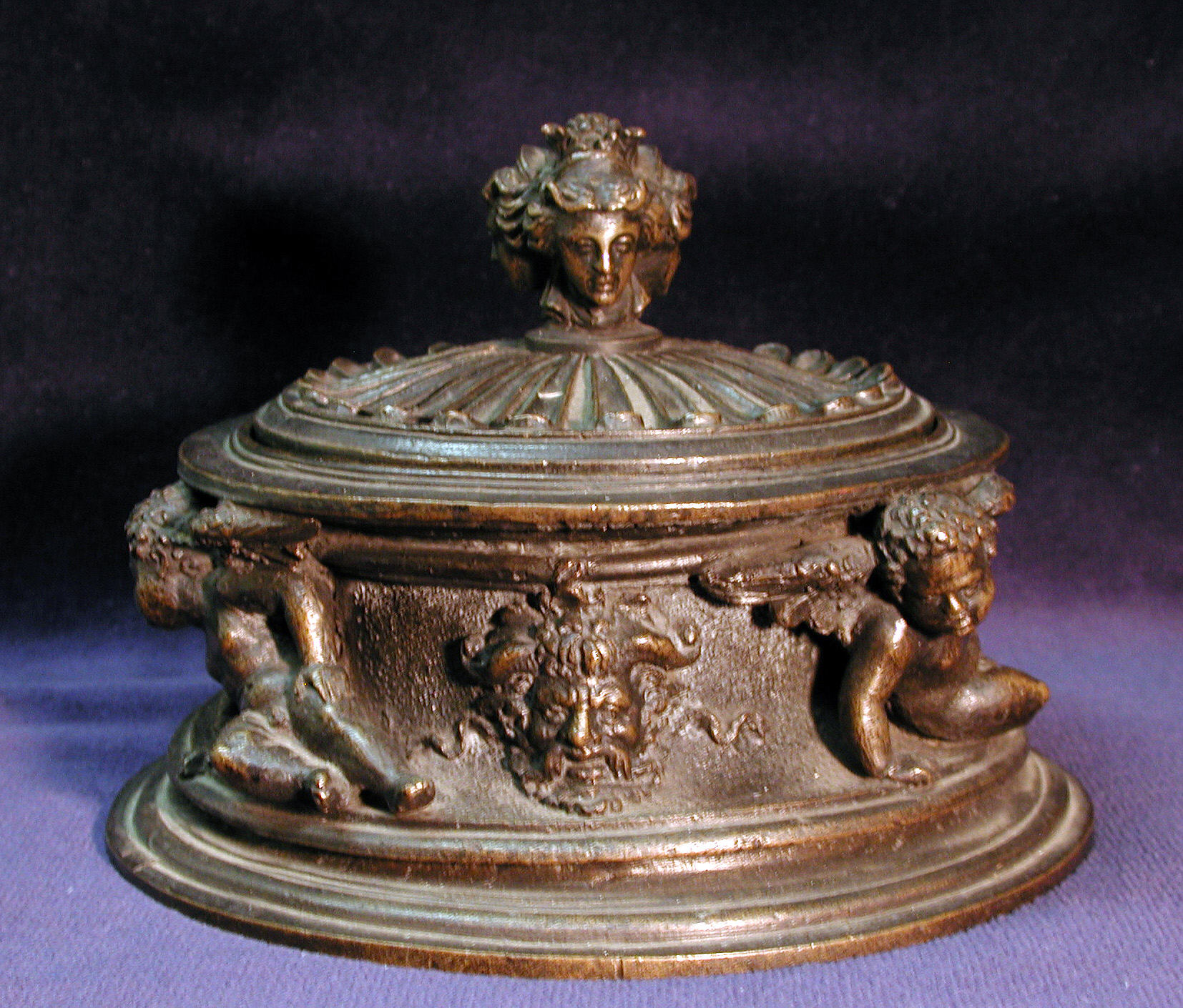Cylindrical container with cover
Not on view
The unusual receptacle has the shape of a low, round cylinder with a gadrooned lid and a handle formed of three female heads attached to each other at their backs. The vessel’s drumlike body has several moldings of different diameters on top and bottom and, between the moldings, a concave frieze decorated with three male masks alternating with three reclining putti. The latter, modeled almost in three dimensions, rest on their right sides supported by their arms, their tiny hands gripping the lower rim of the container, while their left hands are placed akimbo on their left hips. The little wings are fitted below the upper rim, and the heads look with a slightly troubled expression to the left. All three putti are rendered in the same pose but seem to be modeled individually. The masks show a bearded male face with fleshy nose, heavy, contracted brows, leaflike ears, and twisted horns growing from the temples under a wild mane. Their mouths are open as if shouting, and one wonders if this is the reason the putti look at them, almost as if annoyed that they have been awakened from a restful sleep.
The modeling of the container is fresh, vibrant, and slightly sketchy. The bodies and heads of the putti have been enlivened by tiny hammer strokes, which are also seen on the salient parts of the masks. The background of the gorge is covered with small, circular punch marks, achieving a coarse texture as a contrast to the smoother flesh of the putti and masks. The moldings, which give the impression of having been created on a turning table, are slightly lopsided, lending the container a distinctly “handmade” appearance.
The lid, on the other hand, is more perfectly round, with sharply defined gadroons, which, however, differ somewhat in their width. While the lid could be original, the central handle seems to be of different workmanship and may be a later replacement or addition. Whether the three heads merging into one can be interpreted as the three natures of the cardinal virtue of Prudence (memory, intelligence, providence) is difficult to say. They may simply be a response to the three putti and three masks on the container, and since all show the same face of a young woman, their purpose is probably mainly decorative.
The same type of putti and masks can be found on works associated with Desiderio da Firenze, a still rather mysterious artist about whom very little is known. His only documented work is the large voting urn made of bronze in the Museo Civico in Padua, which he executed between March 1532 and February 1533 for the Great Council of that city. In the documents concerning this piece, Desiderio is called “sculptor and founder”; however, he seems to have been primarily a caster, although a very gifted one. The quality of the voting urn, his only secure creation, has led to the reconstruction of a considerable oeuvre of sometimes hotly debated attributions,[1] which places him essentially in the artistic circle of the Paduan sculptor Riccio.
One category of objects that were first attributed to Riccio and now are considered works by Desiderio are cylindrical perfume burners topped by satyrs.[2] Some of these feature between the central drum and the top section a groove with three reclining putti that are very similar in pose, modeling, and placement to those on our container. Moreover, the masks on the voting urn, although placed in the middle section and slightly larger, are almost identical to those on the container, diverging only in the small curving bands growing out of the ears (fig. 21a). Further comparison of the voting urn and the container reveals not only a similar vibrant but slightly rough modeling of the decorative details, but also that the putti, while varying in composition, display exactly the same kind of heads (fig. 21b). Thus, in terms of style and workmanship, there can be no doubt that the container is from the workshop of Desiderio da Firenze, as has been proposed by Jeremy Warren.[3]
Desiderio’s oeuvre seems to consist mostly of utilitarian bronzes, and so a container such as our example would fit with his production. It is also known that he reused sections of one object for another with a different function, a practice consistent with the workshop tradition of the Veneto during the Renaissance. The shape of The Met’s container is rather curious and looks a bit like a sugar bowl. It has sometimes been interpreted as an inkstand, although most of the known inkwells of that period are smaller and have a rectangular shape. Perhaps it was intended as a container for sand. While one is in general suspicious of functional bronzes that do not conform to a certain pattern, the overall quality of this object speaks for a genuine creation of the Renaissance.
-CKG
Footnotes
(For key to shortened references see bibliography in Allen, Italian Renaissance and Baroque Bronzes in The Metropolitan Museum of Art. NY: The Metropolitan Museum of Art, 2022.)
1. Warren 2001a; Jestaz 2005.
2. See MMA, 1975.1.1396. For casts in the Ashmolean, National Gallery of Art, Washington, D.C., and on the art market (formerly Arenberg collection), see Warren 2014, pp. 200–201.
Due to rights restrictions, this image cannot be enlarged, viewed at full screen, or downloaded.
This artwork is meant to be viewed from right to left. Scroll left to view more.





